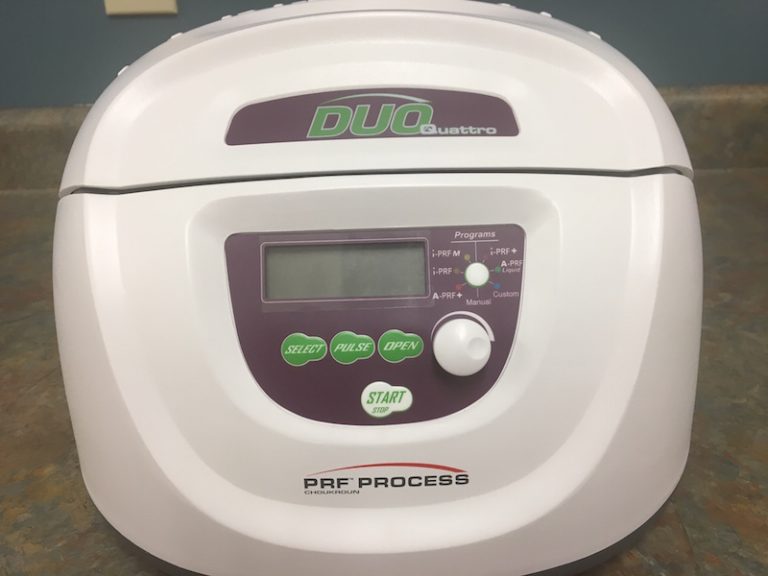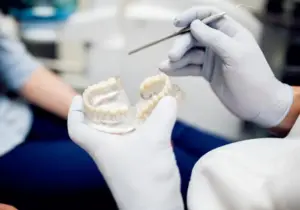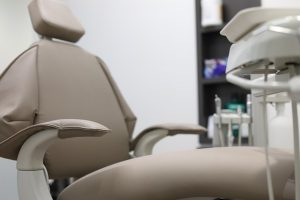At Wilmington Oral Surgery, we use Platelet-Rich Fibrin (PRF) to optimize healing time following oral surgery. Made from your own blood, PRF is comprised of concentrated platelets that feature growth factors that improve your body’s natural ability to heal.
We put PRF into oral surgical centers to better protect the wound site. This reduces inflammation, improves bone regrowth, and optimizes the healing of soft tissue.
The technique was developed for dental, facial and jaw surgery in France, and is often called Choukroun’s PRF after the man who invented it in 2000. There are other platelet concentrates called Vivostat PRF (a pure platelet-rich plasma) and Firinet PRF (a formulation without white blood cells).
We prefer Choukroun’s PRF because it contains white blood cells, which play an important role in growth factor release, immune regulation, infection prevention and the “architectural remodeling” of wound healing.
PRF has been shown to speed healing time by as much as one-third.
It is applied immediately after preparation, or carefully stored. We follow standard protocols for PRF preparation and preservation.
How PRF is Made
A small amount of blood is all we need to make PRF. Immediately after collection, the blood is spun in a centrifuge without the usual addition of anticoagulants.
The spinning separates the blood into its three components (the top watery platelet-poor plasma, the middle platelet-rich plasma, and the bottom red blood cells). The top layer is removed, and the middle layer clots, forming a strong, natural fibrin–or mesh–that traps virtually all the platelets and growth factors. The red blood cells are then scraped off and discarded.
What remains is PRF.
How it Works
Growth factors play a key role in healing, and PRF has three to four times as many growth factors as whole blood. Once placed in a surgical wound site, platelets in the PRF release five different types of growth factors, each of which contains a protein needed for the healing of connective tissues.
The PRF stimulates stem cells to produce new host tissues. It creates a kind of “scaffolding” for these cells to stick, migrate and reproduce.
How we Use It
- When a tooth is pulled, a primary concern is the preservation of the empty socket to minimize bone loss. A PRF placed over the wound enhances bone growth.
- If a sinus lift is needed for a dental implant, PRF is particularly useful, because cartilage does not have blood vessels to initiate healing.
PRF is also used for:
- periodontal regeneration (when periodontitis has destroyed gum tissue or led to bone or tooth loss),
- guided bone and tissue regeneration (a surgical procedure that uses barrier membranes to direct bone growth to sites without space for a prosthesis), and
- regenerative endodontics (tissue engineering to restore root canals).
Advantages Beyond Healing
When compared to previous platelet concentrates, PRF is easy to prepare, easy to apply, and inexpensive. The risks are minimal and we get excellent results:
- Unlike its predecessors, PRF doesn’t require the addition of non-human compounds, which can lead to the development of antibodies to clotting factors, and immune system activations.
- The natural fibrin network also protects growth factors from breaking down into amino acids by the action of enzymes.
- Because it is made from your blood, there is very little chance that PRF will transmit blood-borne diseases.
Learn More
If you would like to learn more about PRF, or how it might be used with your upcoming procedure, call Wilmington Oral Surgery at any time.











